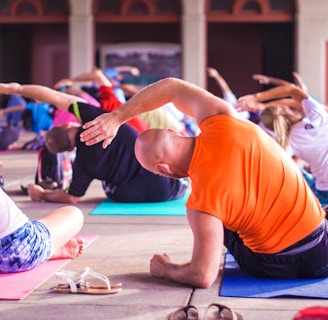DELAYED ONSET MUSCLE SORENESS (DOMS)
Understanding and managing DOMS.
RECOVERY
2 min read


DELAYED ONSET MUSCLE SORENESS (DOMS)
What is Delayed Onset Muscle Soreness (DOMS)?
Delayed Onset Muscle Soreness, commonly known as DOMS, is the muscle pain and stiffness that typically occurs several hours to days after unaccustomed or strenuous exercise. Unlike acute muscle soreness, which happens during or immediately after exercise, DOMS usually sets in 12 to 24 hours post-exercise and peaks around 24 to 72 hours. It is a natural response to increased exertion, especially when the muscles are not accustomed to the intensity or type of exercise performed.
Why Does DOMS Happen?
DOMS is primarily caused by microscopic damage to muscle fibers during exercise, particularly during eccentric contractions, where the muscle lengthens under tension. This damage triggers an inflammatory response, leading to the familiar feelings of soreness and stiffness. While it might sound alarming, this process is a normal part of muscle adaptation and rebuilding, ultimately leading to increased muscle strength and endurance over time.
Do's and Don'ts When Experiencing DOMS
When experiencing DOMS, there are several strategies to help manage the discomfort and promote recovery:
Do's:
1. Stay Active: Engage in gentle activities such as walking or light stretching to increase blood flow and facilitate recovery.
2. Hydrate: Drink plenty of water to help flush out toxins and support muscle repair.
3. Apply Heat: Use a warm compress or take a warm bath to relax muscles and reduce stiffness.
Don'ts:
1. Avoid Overtraining: Give your muscles time to recover before engaging in intense exercise again.
2. Skip Heavy Lifting: Avoid lifting heavy weights until the soreness subsides to prevent further muscle damage.
3. Ignore Persistent Pain: If soreness lasts more than a week or is severe, consult a healthcare professional.
Three Simple Exercises to Relieve DOMS
1. Light Aerobic Activity
Engaging in light aerobic activities such as walking, cycling, or swimming can help increase blood flow to the affected muscles, promoting nutrient delivery and waste removal. This can help reduce the intensity of soreness and speed up the recovery process.
2. Gentle Yoga Stretches
Gentle yoga stretches, particularly those that focus on lengthening and relaxing the muscles, can be very beneficial. Poses such as Child's Pose, Cat-Cow Stretch, and Downward Dog help to improve flexibility, alleviate muscle tension, and enhance circulation.
3. Foam Rolling
Foam rolling is a form of self-myofascial release that helps to massage and stretch the muscles, breaking up adhesions and improving blood flow. Focus on rolling the sore areas gently to reduce muscle tightness and discomfort.
Our Services
Returning client?
Click here to login to our portal!
Direct billing available to most insurance companies!
About Us
Learn More
Rehab8 Physiotherapy. All Rights Reserved 2025
The Intersection of Healing, Movement, and Alignment.
